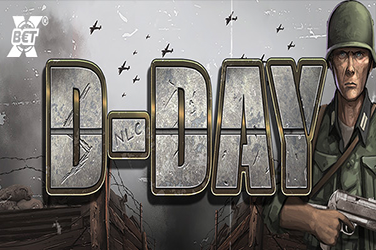Blackjack Optimal Strategy
The table shows every possible starting player hand running down the left-hand side of the table and all possible dealer upcards running along the top of the table. Cross referencing the two will tell you the correct play to make.
First and foremost, as a general rule the player should never take Insurance. Unless using an advanced and mathematically proven strategy that will alert the player to the rare situations in which Insurance is worthwhile, it should be avoided as a bad bet for the player.
Next, it should be understood that every possible combination of player hands and dealer up card has a mathematically correct play. These can be summarized in what is known as a Basic Strategy table. However, certain plays in the table need to be modified according to the specific combination of rules in force. To be sure of playing correctly, it is necessary to generate a Basic Strategy table for the specific rules of the game being played. Various tools are available online to do this.
It should be noted that even playing perfect Basic Strategy for the rule set in play, the player will still usually be at a disadvantage.

Card Counting
Card Counting provides the player a mathematically provable opportunity to gain an advantage over the house. It must be understood that this does not guarantee that the player will win. Just as a regular player may win though good luck despite playing at a disadvantage, it is perfectly possible for the Card Counter to lose through an extended period of bad luck even though playing with a small advantage over the House.
The basic premise of Card Counting is that mathematically speaking, low cards on average are beneficial to the dealer while high cards favour the player. There are many subtle reasons for this but the most significant are:
A player who receives a Blackjack (a ten value card and an Ace – two high cards) is paid one and a half times their bet. The dealer however only receives the player’s bet when dealt a Blackjack.
While the player can stop taking additional cards at any time, rules require the dealer to continue drawing cards until they reach a total of 17. The player can choose whether or not to take an additional card on a total of 16 whereas the dealer has to take one. In this situation small cards are less likely to cause the dealer to bust are thus favour the dealer, while big cards cause the dealer to bust more often and favour the player.
The majority of situations where it is correct of the player to double are starting hands that would be made very strong by the addition of a ten value card or an Ace. Therefore, doubling becomes more favourable when there are more ten value cards and Aces left in the deck.
So the Card Counter looks for times when there are more high cards left to be played than a regular deck would have. Rather than trying to remember each card that has been played, the Card Counter will usually use a ratio system that offsets cards that are good for the player against cards that are good for the dealer.
The most commonly used Card Counting system is the HiLo count, which values cards as follows:

| High cards: 10, J, Q, K, A: | -1 |
| Medium cards: 7, 8, 9: | 0 |
| Low cards: 2, 3, 4, 5, 6: | +1 |
To keep track the player starts at zero, adds one to the total every time a low card is played and subtracts one from the total when a high card is played. This is called the ‘Running Count’. It may seem counter-intuitive to subtract one for high value cards that are good for the player, but a high card that has been played is one less high card that is left to be played. Where the Running Count is positive the player knows that there are more player favourable cards remaining to be played.
When kept correctly the Running Count will start at 0 and, if all the cards were to be played out, would end at 0. This is because there are an equal number of high cards and low cards. The HiLo count is therefore referred to as a ‘Balanced Counting System’.
Card Counting systems are generally not impeded by the addition of multiple decks to the game. At any rate multiple decks do not make it significantly more difficult for the Card Counter to keep track of the Running Count, since the Card Counter only needs to keep track of a single number, the Running Count. However many decks are used, the count begins at zero and would end at zero if there were no cards left, so no changes need to be made to the counting process.
Where multiple decks do make a difference is in how much impact a positive Running Count has to the player advantage. If the Running Count is +10 and there are two decks remaining to play, this means there are an extra 5 player favourable cards in each deck. If there are 5 decks remaining to be played there are only 2 extra player favourable cards in each deck. The higher the concentration of extra player favourable cards the stronger the player’s advantage. To estimate the strength of the player advantage the Running count therefore needs to be divided by the number of decks remaining to be played. This figure is called the True Count.
With the True Count the player has a consistent measure of how many extra player favourable cards are contained within the cards remaining to be dealt. The player can use this information to vary their bet and playing strategy. Deviations from Basic Strategy are far less important than placing big bets when the True Count is high and low bets (or preferably nothing) when the True count is low or negative.
It is important to note that sizing your bet correctly is critical to your long term success as a card counter. This requires substantial additional knowledge that is beyond the scope of this article.
While Card Counting is legal in most jurisdictions, for obvious reasons casinos do not like players that can consistently beat them. They therefore employ counter measures and any players they identify as Card Counters will be asked to leave the casino. The most common method used to identify Card Counters is to watch for a large bet spread (difference between the minimum and maximum bet a player uses) and to see whether large bets correlate with player favourable counts. Card Counters have developed several methods to help them avoid detection. The two most common are:
Wonging / Back Counting. Named after Blackjack author Stanford Wong, this is the practice of watching the cards being played and only sitting down to play when there is a player favourable count. This practice reduces the bet spread the player uses as they only place bets in player favourable situations but casinos are now well aware of this strategy and watch out for players hanging around a table and not playing. The method is still useful, but not without its problems.
Team Play. This involves several trained Card Counters working together. Most commonly there would be several ‘Spotters’ sitting at different tables keeping track of the count and either back counting or playing minimum bets. When a table reaches a positive count the Spotter would signal to the ‘Big Player’ who would come over and bet big during the player favourable count. This allows both players to make very little variation in their bets. Casinos are aware of this strategy and watch for groups of players working together.
There are several variations on team play designed to be employed in different situations and to different effects. These are covered more fully in the reading resources detailed below.
Successful Card Counting is generally only profitable in land based casinos, not in online games. The strategy relies on the game having a “memory” in that cards are dealt from the cards remaining after previous rounds have been played. Online Blackjack games are dealt by computer and normally use a random number generator to shuffle the whole deck after every round of play. Games of this sort are not countable.
There are some Live Blackjack games online, which are played over a video feed with a human dealer. These could technically be counted but there are several significant disadvantages that make this difficult or not worth the player’s time:
Games of this type are very slow to play. A slow game means less money made.
The games generally offer poor “penetration”. This means that the decks are shuffled early, not allowing enough cards to be dealt out for many player favourable situations to develop. (The most favourable situations for the player tend to occur further into the shoe.)
The casino’s software records every player bet and all the cards dealt. This makes it relatively easy for a casino to employ software to track the count and watch for players raising their bet or only playing when the count is favourable.
For the above reasons Card Counting has not become commonplace online.






